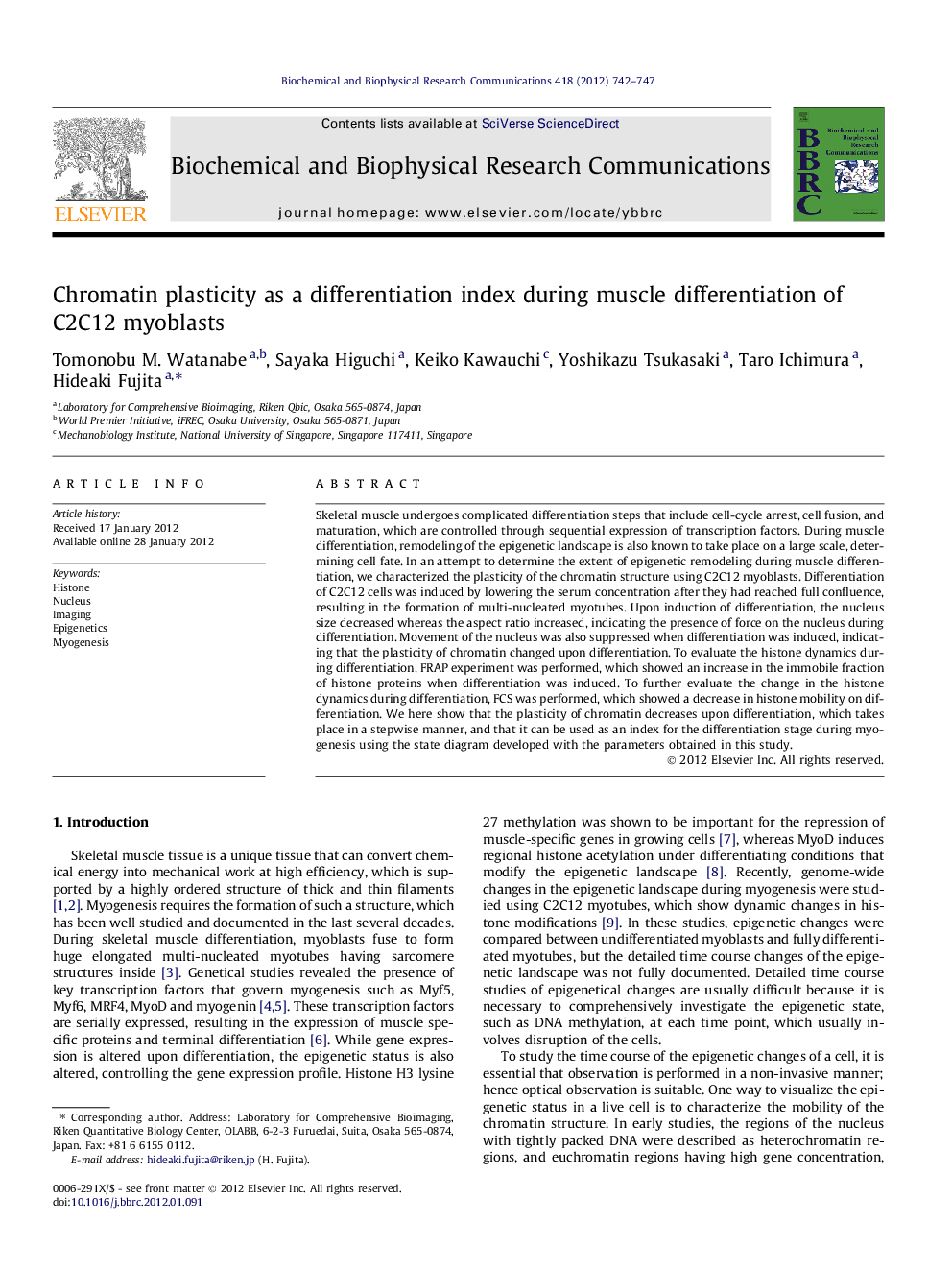| Article ID | Journal | Published Year | Pages | File Type |
|---|---|---|---|---|
| 1929904 | Biochemical and Biophysical Research Communications | 2012 | 6 Pages |
Skeletal muscle undergoes complicated differentiation steps that include cell-cycle arrest, cell fusion, and maturation, which are controlled through sequential expression of transcription factors. During muscle differentiation, remodeling of the epigenetic landscape is also known to take place on a large scale, determining cell fate. In an attempt to determine the extent of epigenetic remodeling during muscle differentiation, we characterized the plasticity of the chromatin structure using C2C12 myoblasts. Differentiation of C2C12 cells was induced by lowering the serum concentration after they had reached full confluence, resulting in the formation of multi-nucleated myotubes. Upon induction of differentiation, the nucleus size decreased whereas the aspect ratio increased, indicating the presence of force on the nucleus during differentiation. Movement of the nucleus was also suppressed when differentiation was induced, indicating that the plasticity of chromatin changed upon differentiation. To evaluate the histone dynamics during differentiation, FRAP experiment was performed, which showed an increase in the immobile fraction of histone proteins when differentiation was induced. To further evaluate the change in the histone dynamics during differentiation, FCS was performed, which showed a decrease in histone mobility on differentiation. We here show that the plasticity of chromatin decreases upon differentiation, which takes place in a stepwise manner, and that it can be used as an index for the differentiation stage during myogenesis using the state diagram developed with the parameters obtained in this study.
► Change in the epigenetic landscape during myogenesis was optically investigated. ► Mobility of nuclear proteins was used to state the epigenetic status of the cell. ► Mobility of nuclear proteins decreased as myogenesis progressed in C2C12. ► Differentiation state diagram was developed using parameters obtained.
